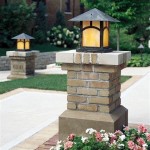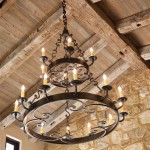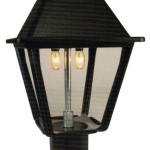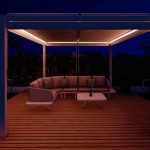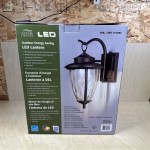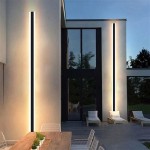Laser Outdoor Lights Projectors: Illuminating Landscapes with Modern Technology
Laser outdoor lights projectors have rapidly gained popularity as a dynamic and energy-efficient alternative to traditional outdoor lighting. These devices utilize laser technology to project intricate patterns and designs onto various surfaces, transforming landscapes, buildings, and outdoor spaces into vibrant displays. Understanding the principles, applications, advantages, and potential considerations associated with laser outdoor lights projectors is crucial for making informed decisions regarding their implementation.
Understanding the Technology Behind Laser Projectors
The core technology behind laser outdoor lights projectors revolves around the generation and manipulation of laser beams. A laser, which stands for Light Amplification by Stimulated Emission of Radiation, produces a highly focused and coherent beam of light. This beam is then directed through a series of optical components, including lenses and diffraction gratings, to create the desired patterns and effects. Different colors are achieved by employing lasers of varying wavelengths, such as red, green, and blue (RGB) lasers, which can be mixed to produce a wide spectrum of hues.
The projection process involves the use of galvanometers, also known as scanners, which are small, highly precise mirrors that rapidly deflect the laser beam. These scanners are controlled by a computer or microcontroller, allowing for complex and dynamic patterns to be created. The speed and accuracy of the galvanometers determine the resolution and smoothness of the projected images. Higher-quality projectors utilize advanced scanning systems that minimize distortion and flicker, resulting in a more visually appealing display.
The intensity of the laser beam is another critical factor in the performance of outdoor laser projectors. The brightness of the projected image must be sufficient to overcome ambient light, especially in urban environments. Laser projectors designed for outdoor use typically have higher power outputs compared to indoor models. However, safety considerations are paramount, and regulations dictate maximum permissible exposure levels to prevent eye damage. Manufacturers often incorporate safety features such as automatic shut-off mechanisms that activate if the projector is tilted or obstructed.
Weather resistance is a significant consideration for outdoor laser projectors. These devices must be able to withstand exposure to rain, snow, extreme temperatures, and dust. Projectors designed for outdoor use are typically housed in rugged, weatherproof enclosures that protect the internal components from the elements. Ingress Protection (IP) ratings, such as IP65 or IP67, indicate the level of protection against solid objects and liquids. A higher IP rating signifies greater protection.
Applications of Laser Outdoor Lights Projectors
Laser outdoor lights projectors offer a wide range of applications, spanning from residential decorations to commercial displays and large-scale events. Their versatility and ease of installation have made them a popular choice for various lighting needs.
During holidays such as Christmas and Halloween, laser projectors are commonly used to create festive displays on homes and lawns. Projectors can display static or animated images of snowflakes, stars, pumpkins, and other holiday-themed designs. The ease of setup, compared to traditional string lights, is a major advantage. Instead of spending hours untangling and hanging lights, a laser projector can be placed in the yard and instantly transform the exterior of the house.
Commercial applications include architectural lighting, advertising, and event decoration. Businesses use laser projectors to highlight building facades, create eye-catching displays, and attract customers. Restaurants and bars may use projectors to create ambient lighting or project logos onto walls. At events such as concerts and festivals, laser projectors can be used to create dynamic visual effects that enhance the overall experience. Large-scale projections can cover entire buildings or landscapes, creating immersive and memorable spectacles.
Landscape lighting is another area where laser projectors are gaining traction. By projecting subtle patterns and colors onto trees, shrubs, and other outdoor features, projectors can create a sophisticated and inviting ambiance. This type of lighting is particularly effective for highlighting architectural details and creating a sense of depth and dimension in the landscape. The ability to change the patterns and colors allows for customization based on the season or occasion.
Security applications are also emerging. Laser projectors can be used to create virtual fences or warning lines, deterring trespassers and enhancing perimeter security. The visibility of the laser beams can be adjusted to suit the ambient conditions, ensuring that they are easily seen even in low-light environments. When integrated with motion sensors, laser projectors can automatically activate when movement is detected, alerting security personnel to potential threats.
Advantages and Considerations
The adoption of laser outdoor lights projectors is driven by several advantages, including energy efficiency, ease of installation, versatility, and durability. However, certain considerations must be addressed to ensure safe and effective implementation.
Energy efficiency is a significant benefit. Laser projectors typically consume less power than traditional outdoor lighting systems, such as incandescent or halogen bulbs. This can result in substantial energy savings over time, reducing electricity bills and minimizing the environmental impact. LED-based laser projectors are particularly energy-efficient, as they convert a larger percentage of electrical energy into light compared to other lighting technologies.
Ease of installation is another key advantage. Unlike traditional string lights, which require extensive wiring and mounting, laser projectors can be set up in minutes. Most projectors come with a stake that can be inserted into the ground, and the projector can then be aimed at the desired surface. Some models also include mounting brackets for attaching the projector to walls or other structures. The simplicity of the installation process makes laser projectors accessible to a wide range of users, regardless of their technical expertise.
Versatility is a major selling point. Laser projectors offer a wide range of patterns, colors, and effects, allowing for customization and creativity. Many projectors come with pre-programmed designs, and some models allow users to upload their own images and animations. The ability to change the patterns and colors on the fly makes laser projectors suitable for a variety of occasions and events. The dynamic nature of the displays can create a more engaging and visually appealing environment compared to static lighting.
Durability is an important consideration for outdoor lighting. Laser projectors designed for outdoor use are typically built to withstand harsh weather conditions, including rain, snow, and extreme temperatures. The use of weatherproof enclosures and high-quality components ensures that the projectors can operate reliably for extended periods. However, regular maintenance is still necessary to keep the projectors in optimal condition. This may include cleaning the lenses and checking the connections to ensure proper functionality.
Safety considerations are paramount. Direct exposure to laser beams can cause eye damage, so it is essential to follow the manufacturer's instructions and avoid aiming the projector directly at people or animals. Laser projectors are classified based on their power output and potential hazard level. Class 1 and Class 2 lasers are generally considered safe for consumer use, while Class 3 and Class 4 lasers require more stringent safety precautions. It is important to choose a projector that is appropriate for the intended application and to use it responsibly.
Compliance with regulations is essential. Many jurisdictions have regulations regarding the use of outdoor lighting, including restrictions on brightness, direction, and operating hours. It is important to check local ordinances before installing a laser projector to ensure compliance with these regulations. Some regulations may also address light pollution, which is the excessive or misdirected use of artificial light that can disrupt the natural environment and affect human health. Using laser projectors responsibly and minimizing light spill can help reduce light pollution.
Maintenance and care are essential for prolonging the life of laser outdoor light projectors. Regular cleaning of the lens and housing is recommended to remove dust and debris that can affect the quality of the projected image. Storing the projector in a dry and safe place when not in use can also help prevent damage. Checking the power cord and connections periodically can ensure that the projector is operating safely and efficiently.

Illuminating Laser Light Lights Projector Outdoor

Studio Outdoor Laser Projector

Morttic Star Laser Projector Light Led Moving Outdoor Landscape Stage Rgb Lamp Waterproof With Remote Com

Dambly S Laser Lights And Projectors Damblys Garden Center

Grnshts Laser Lights Projector Red And Green Star Show For Outdoor Decorations Waterproof Landscape Lighting Ornament Holidays Without Remote Com

Outdoor Disco Laser Lights 2w Rgb Aurora Dj Wedding Stage Show Ip65

Ledmall Motion Pattern Firefly 3 Models In 1 Continuous 18 Patterns Rgb Outdoor Laser Garden And Lights Lm Ll Rgbmpr 0001 The Home Depot

6 Best Light Projectors Of 2024

Landmark Laser Sky Light

Ledmall 7 Color Lights Full Spectrum Motion Star Effects White Laser Lm Ll Wrmr 0001 The Home Depot
Related Posts


